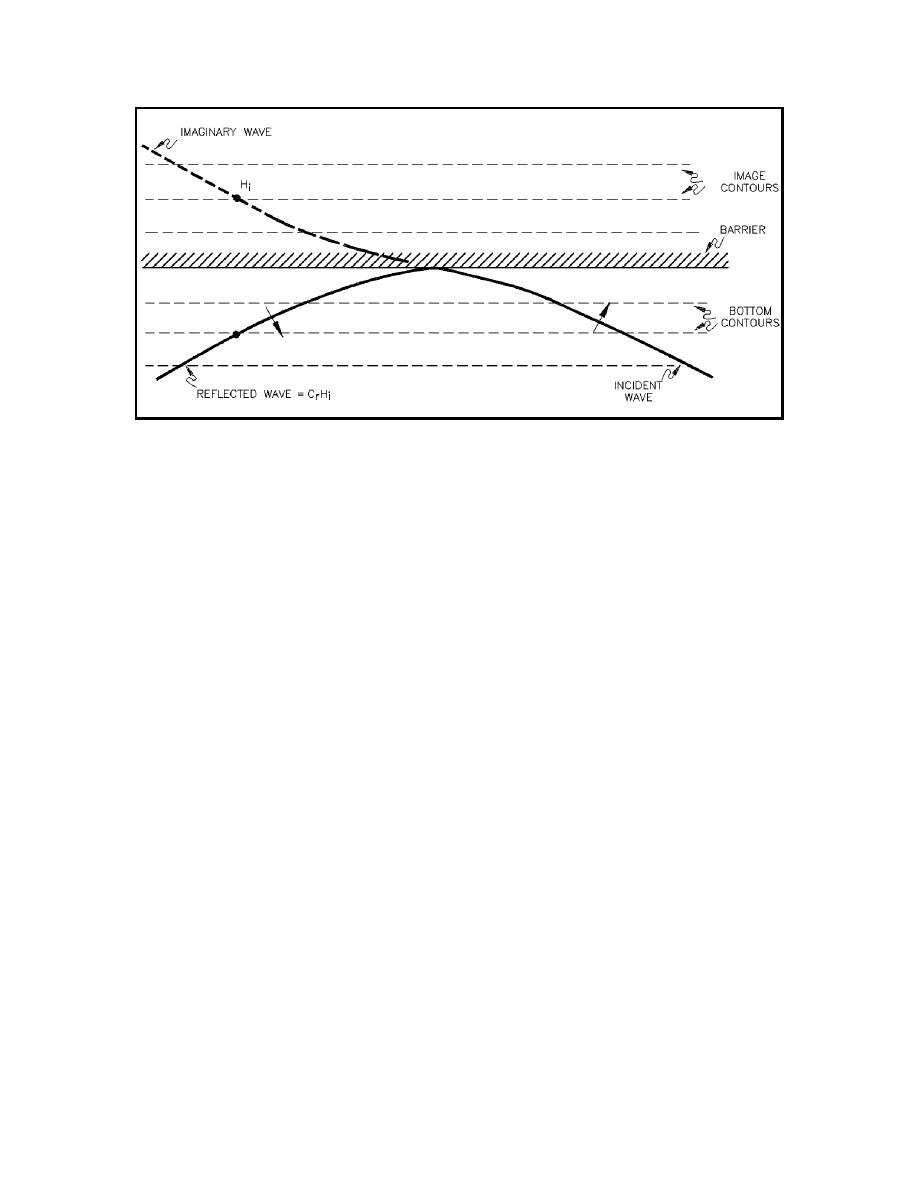
EM 1110-2-1100 (Part II)
30 Apr 02
Figure II-7-24. Reflected wave crest pattern
(2) The reflected wave height at any point would be the height at the corresponding point in the
imaginary area multiplied by the reflection coefficient at the point on the barrier where that segment of the
wave reflected.
(3) Figure II-7-25 shows a wave diffracting in the lee of a breakwater and then reflecting off a wall
(Cr > 0). The inner end of the reflected wave then hits a beach where it is effectively dissipated; the outer end
of the reflected wave diffracts around the breakwater tip and escapes the harbor. The height the reflected
wave would have at point A would equal the diffracted height at A' times the reflection coefficient of the wall.
By applying the concepts demonstrated in Figures II-7-24 and II-7-25, one can develop the reflection patterns
and resulting wave heights for more complex harbor situations (see Carr (1952) and Ippen (1966)).
e. Reflection problems at harbor entrances.
(1) Generally speaking, wave energy that penetrates a harbor entrance should be dissipated as soon as
possible, to prevent its subsequent reflection and propagation further into and about the harbor. A number
of mechanisms for doing so are discussed in Bruun (1956, 1989). One mechanism is to construct sections
of beach, stone mounds or other specially designed wave dissipating structures having low reflection
coefficients at appropriate positions just inside the harbor entrance. Another mechanism is to construct
resonance chambers at the entrance that are tuned to the dominant frequencies of the incident wave spectrum
to set up oscillations that dissipate the penetrating wave energy. Often the general layout of the harbor can
be designed to minimize the amount of wave energy that penetrates through the entrance and reflects and
rereflects around the harbor.
(2) When significant wave reflection occurs in the vicinity of a harbor entrance (either inside or outside)
the incident and reflected waves cross to form a complex "diamond-shaped" wave pattern. Hsu (1990)
presents an extensive discussion of the kinematics of the resulting short-crested waves. This form of wave
action can cause navigation difficulties and unusual sediment transport and scour patterns (see Silvester and
Hsu (1993)).
II-7-30
Harbor Hydrodynamics


 Previous Page
Previous Page
